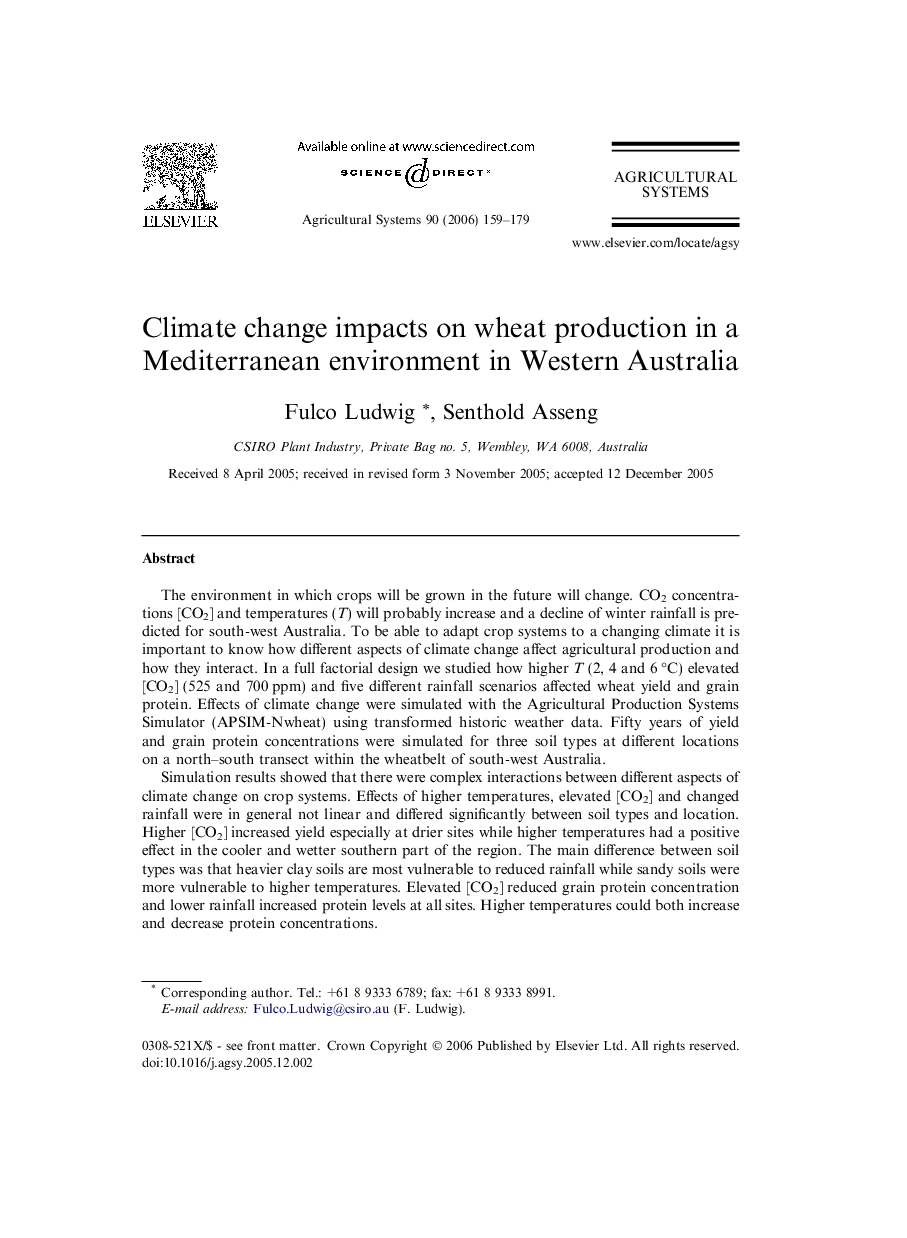| Article ID | Journal | Published Year | Pages | File Type |
|---|---|---|---|---|
| 4491931 | Agricultural Systems | 2006 | 21 Pages |
The environment in which crops will be grown in the future will change. CO2 concentrations [CO2] and temperatures (T) will probably increase and a decline of winter rainfall is predicted for south-west Australia. To be able to adapt crop systems to a changing climate it is important to know how different aspects of climate change affect agricultural production and how they interact. In a full factorial design we studied how higher T (2, 4 and 6 °C) elevated [CO2] (525 and 700 ppm) and five different rainfall scenarios affected wheat yield and grain protein. Effects of climate change were simulated with the Agricultural Production Systems Simulator (APSIM-Nwheat) using transformed historic weather data. Fifty years of yield and grain protein concentrations were simulated for three soil types at different locations on a north–south transect within the wheatbelt of south-west Australia.Simulation results showed that there were complex interactions between different aspects of climate change on crop systems. Effects of higher temperatures, elevated [CO2] and changed rainfall were in general not linear and differed significantly between soil types and location. Higher [CO2] increased yield especially at drier sites while higher temperatures had a positive effect in the cooler and wetter southern part of the region. The main difference between soil types was that heavier clay soils are most vulnerable to reduced rainfall while sandy soils were more vulnerable to higher temperatures. Elevated [CO2] reduced grain protein concentration and lower rainfall increased protein levels at all sites. Higher temperatures could both increase and decrease protein concentrations.In the southern, higher rainfall part of south-western Australia, yield and gross margin will increase for all likely future climate scenarios. In the drier part of the region, negative effects of 15% reduced rainfall can be compensated for by a 2 °C increase in temperature and 50% higher [CO2] concentrations. However due to the non-linearity of climate change effects a 30% reduction in rainfall cannot be compensated for by higher temperatures and [CO2].
